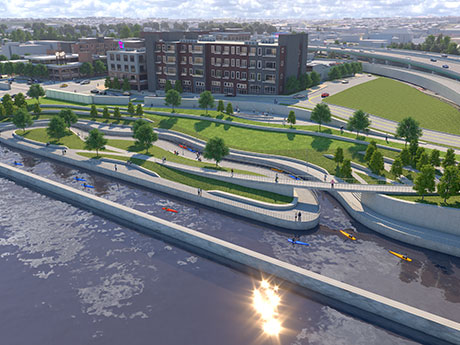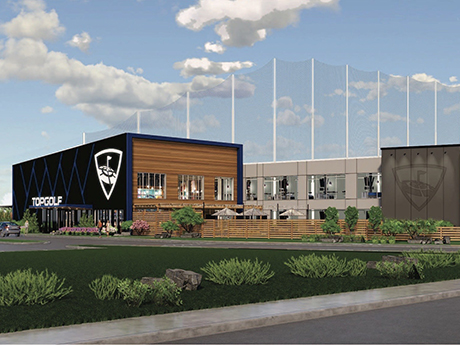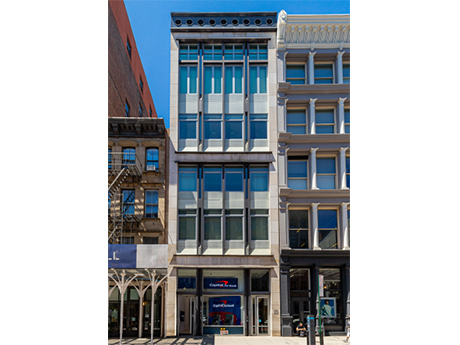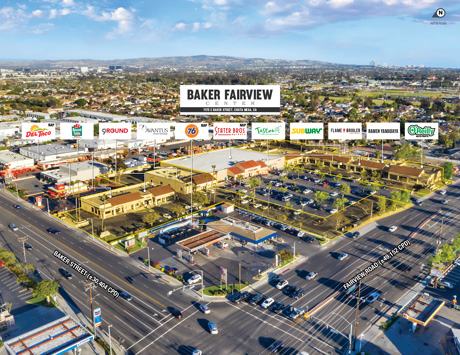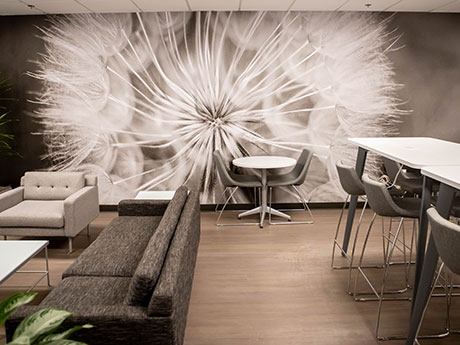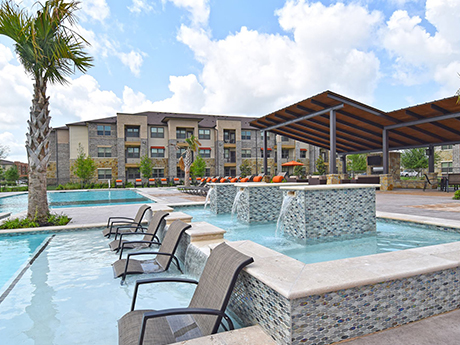Inflation is here. Is the Memphis multifamily market built to withstand it? Coming off an unprecedented year of sales volume in 2021, Memphis multifamily assets continue to be in high demand despite rising interest rates. While year-over-year sales volume might be down, the average market sale price per unit increased by 10 percent to $90,700 over the same period, as of second-quarter 2022. While overall market rent per unit growth is off double-digit highs from 2021, it is still up a sturdy 8 percent year-over-year. Strong occupancy levels, low concession rates and limited on-market supply is keeping pricing buoyant, leading to steady cap rates in the face of rising debt cost — at least for now. Capital investment and renovation to existing multifamily properties contributed greatly to both rent growth and sales volume in 2021. Memphis is a very appealing option for investors seeking value, as over 50 percent of all transactions in 2021 fell within the $40,000 to $80,000 per unit range, which is much more competitive than many primary markets. With over two-thirds of existing inventory built before 2000, the vintage of current inventory provides ample opportunities to reposition assets. Local government entities have actively played a role …
Market Reports
By Mike Holzgang and Brad Christiansen, Executive Vice Presidents, Colliers Portland is seeing a number of employers reassess their post-pandemic workplace. Generally, this translates to companies downsizing to account for hybrid work models, with smaller/shared workstations and more conferencing space. New development has slowed in anticipation of an increased interest rate environment, historically high construction costs and supply chain constraints. Construction timelines are protracted due to all of those issues by as much as 50 percent to 100 percent. Most of the new construction coming online in Portland was initiated before the pandemic. Notable downtown projects include two mixed-use developments named 11W and Block 216. Both of these projects will add significant office space to the city’s popular West End district. The first, 11W, should deliver this year, while Block 216 will deliver in 2023. Construction in the suburban submarkets has also been slow, but we wouldn’t be surprised if it starts to pick up within the next 18 months or so. Interest and Effect Depending on where you are looking, the market is favorable for both landlords and tenants. It is a landlord’s market in the suburban areas, particularly in those south and southwest of Portland. The Central City …
By Douglas Laird and Karl Hoffman, Skogman Commercial Realty Last year’s article on Cedar Rapids began by describing the 2020 Derecho windstorm that brought major damage to Iowa. This included our entire city of Cedar Rapids — an area of 75 square miles. There has been good progress toward recovery; yet many homes and businesses are still in need of repair. In addition, both individuals and companies confront inflation, energy costs and unpredictable consumer costs and shortages. In spite of these hurdles, however, the growth in the multifamily, residential and industrial sectors matches national trends. National rankings are exemplary for the city of Cedar Rapids: • No. 10 in “Best Cities to Buy a House in America” • No. 18 in “Cities with the Lowest Cost of Living in America” • No. 3 in the list of “Top 20 Fastest Metro Areas to Save for Your First Home” The multifamily sector has many exciting new projects in the pipeline totaling over $100 million. Here are just a few: • First on First West: a mixed-use site along First Avenue West • Loftus Lumber site: a five-story building with 186 market-rate units • KCG Development at Jacolyn Drive SW Land sales …
By Taylor Williams First things first: By most objective metrics and standards, multifamily assets in major Texas markets still represent strong investment propositions relative to certain other commercial sectors, as well as to the stock market, the other long-term vehicle to which real estate investments are most commonly compared. But as we cross the midpoint of 2022, the U.S. economy finds itself awash in a unique combination of challenging and extreme circumstances. Mainstream news coverage increasingly includes the word “record” in reports on inflation, one-off interest rate hikes and movement in the 10-Year Treasury yield. The yield on two-year Treasury notes recently eclipsed that of the 10-year, creating the “inverted curve” that has historically been an indicator of an upcoming downturn. Rumblings of an imminent recession grow louder by the day. Fear is contagious, and some markets are already showing signs of hunkering down in anticipation of a downturn. The expectation of recession, let alone the materialization of it, impacts even the strongest of markets, including multifamily assets in Texas. Investors and brokers who specialize in the property type recognize that certain factors — net in-migration of hundreds of thousands of people per year, exceptional corporate relocation activity, and supply …
Memphis has seen a tight retail market for quality space and development opportunities since the COVID-19 pandemic. Our market sits at a 3.5 percent vacancy rate, according to CoStar Group analytics, and overall retail leasing activity is strong. Memphis has benefitted from a consumer base that is ready to return to the pre-pandemic rhythms of life. Retail sales have been healthy overall, with strong increases in sales of restaurants, particularly restaurants with a drive-thru. Rents for high-demand space have increased accordingly given the lack of quality opportunities for new-to-market or expanding retailers. Investment sales activity has been steady with an average cap rate around 7 percent, according to CoStar. Well-located and stable shopping centers are trading lower. A handful of high-profile institutional assets are either on the market or about to hit the market, and we expect those to trade at sub-7 percent cap rates. Ford Motors and SK Innovation’s new electronic vehicle (EV) and battery production facility in Stanton, Tenn., (25 miles east of Memphis) is anticipated to have a positive impact on the local economy. The $5.6 billion mega campus, called Blue Oval City, will add around 5,700 new jobs at its plant, with several more thousands indirectly …
By Brent Glodowski, director, capital markets group, Avison Young Conditions are looking up for retail real estate investment in New York City. In one sense, “up” is the only way to go for a sector that has been bumping along the bottom of a trough. But with inflation tempering investors’ recent fascination with multifamily and industrial properties, retail also offers opportunities to acquire price-corrected assets when those other property types hover near cyclical peaks. Retail’s Head Start New York’s retail real estate market was already suffering from changing consumer tendencies when COVID-19 arrived and thrust many retailers and their landlords into a full-blown crisis. Even when government-ordered shutdowns eased, remote work policies drained office buildings of the customer bases that had supported swaths of restaurants, shops and entertainment businesses. Home-bound workers became a redistributed daytime population, shifting demand for meal delivery and other retail to new areas. Hundreds of small businesses went under, leaving vacant storefronts in their wake. Some retailers altered business plans to serve shifting customer bases that had developed new, pandemic-influenced consumption practices. Landlords with vacancies to fill turned to traditional strategies, such as relocating tenants from out-of-the-way spaces to fill their most visible storefronts. Property owners …
By John R. Read, Senior Vice President, CBRE National Retail Partners-West It’s critical to go back to the basics in times of ever-increasing uncertainty. It is not new news that we are currently seeing inflation at a 40-year high, significantly higher interest rates and weaker economic growth expectations, including more talks of a pending recession, which is driving uncertainty in the U.S. market. These factors require us to consider a market’s fundamentals. For attractive fundamentals, look no further than Orange County’s retail market. Orange County’s unemployment rate was 2.7 percent in April 2022, down from a revised 3.1 percent in March 2022, and below the year-ago estimate of 6.8 percent. With California’s unadjusted unemployment rate at 3.8 percent and the nation at 3.3 percent (for the same period), Orange County outperformed both metrics. The county’s leisure and hospitality sector added 6,200 jobs, with 74 percent of these added between March and April of 2022, the most job additions of any sector. Food services and drinking establishments provided most of the employment increase in the subsector, with 4,000 more jobs. Arts, entertainment and recreation also added 1,600 jobs. Orange County boasts about 1,246 arts, entertainment and recreation destinations, along with 7,993 accommodations and …
By Ryan Nierman, Ph.D. and Bradley Meloche, Colliers The tumultuous events of the last two years have brought uncertainty into many aspects of Detroit’s office market. Even as companies emphasize their eagerness to return to the office, many questions remain regarding space designs, required square footage and buildout requirements. Tenant selectivity With increasing vacancy rates and negative net absorption throughout the metro Detroit office market, real estate experts are witnessing tenants becoming more selective in property occupancy. The result has been a slowing demand for Class B and C office product. Tenants have begun targeting Class A assets with improved visibility, signage, modernized color schemes, numerous amenities and flexible floorplan designs. As the need for larger office footprints goes down in reaction to post-COVID considerations, tenants have become willing to pay increased per-square-foot rents, for at or below preexisting rental budgets, due to decreased size requirements. The need for tenants to target Class A facilities has been compounded by the so-called “Great Resignation,” as employees are willing to demand more from their employers. As a result, employers know that a failure to invest in a more modern and amenitized workspace may result in poor employee retention and future talent recruitment. …
By Taylor Williams The factors and parameters by which commercial lenders and investors underwrite, value and price assets are changing at whirlwind speeds, creating a capital markets landscape that is defined by volatility as the second half of the year unfolds. Capital markets professionals — as well as regular consumers — seem to agree that interest-rate hikes are a necessary evil in warding off record-high inflation. The Consumer Price Index (CPI) rose 8.6 percent year-over-year in May, the latest data available at the time of this writing. But a lack of clarity on the magnitude of these future rate hikes makes it increasingly difficult for commercial borrowers to accurately gauge risk in their deals and project cash flows at their properties. The Federal Reserve’s decision to raise the federal funds rate by 75 basis points at its latest June meeting illustrates the impulsiveness and hastiness with which fiscal policy is being crafted. Prior to the release of the May inflation report the previous week, investors had widely anticipated a 50-basis-point hike. Reports of an even more aggressive rate bump crystallized fears of inflation and sent the stock market into a spiral, with the Dow Jones Industrial Average shedding more than …
2021 was a banner year for the Memphis industrial market by virtually every measure. Leasing exceeded 32 million square feet, easily doubling the average of 12.8 million square feet per year; annual net absorption reached 12.7 million square feet, the highest ever recorded; 14.6 million square feet of inventory delivered to the market; rental rates reached historic highs; and investment volume topped $2.2 billion. The potent demand that carried the market to such record-setting extremes continued into the beginning of 2022, with leasing activity in the first quarter approaching 6 million square feet and net absorption surpassing 3.3 million square feet. Sustaining the steady upward trend the Memphis market has followed since the beginning of 2019, the direct vacancy rate rose 50 basis points from last year to 6.8 percent, but this increase is largely due to the profusion of spec product rather than any significant moves out of the market. In typical fashion, the bulk of leasing activity occurred in the Southeast, DeSoto County and Marshall/Fayette County submarkets, comprising more than 75 percent of the quarter’s total volume. But even the Northwest submarket has seen more action recently with the delivery of Amazon’s 181,500-square-foot last-mile facility in the Raleigh …




